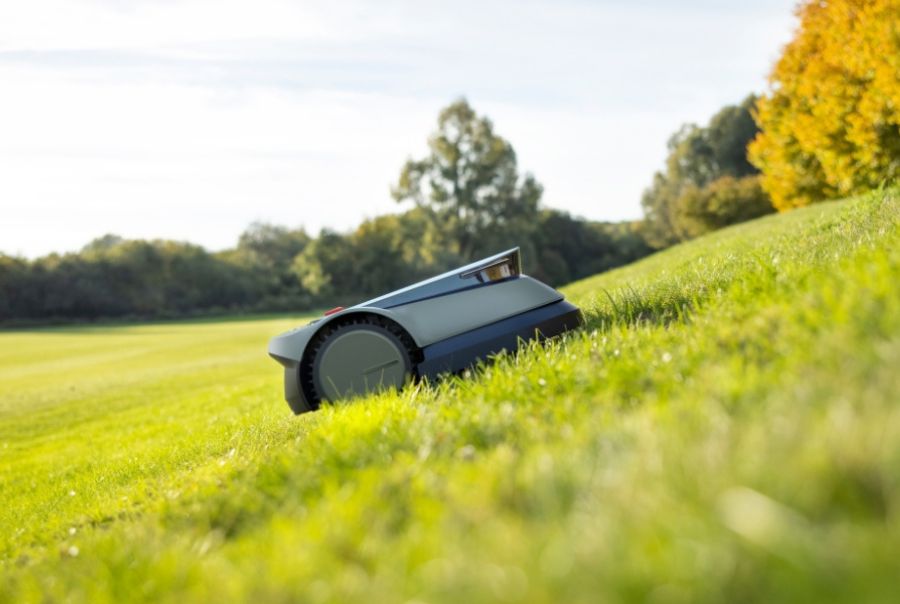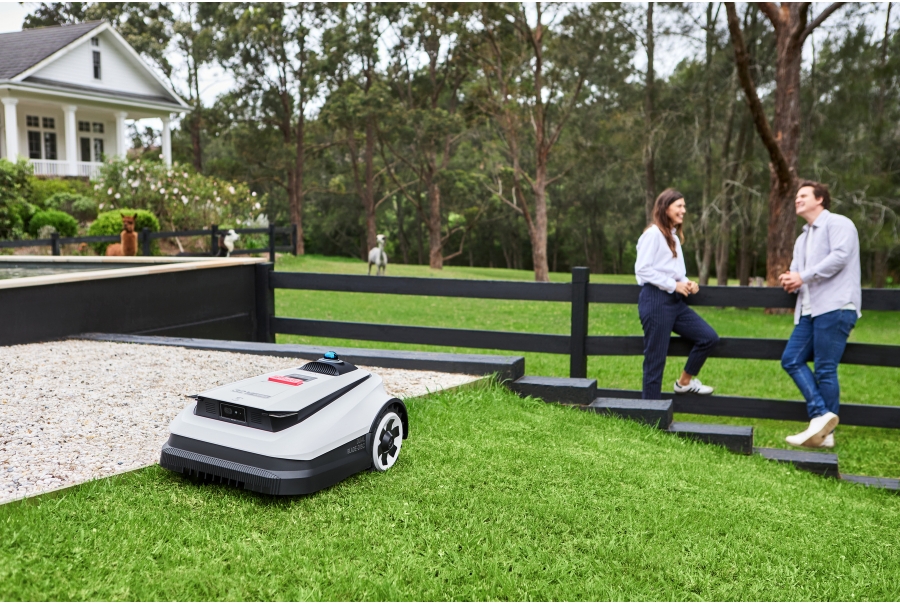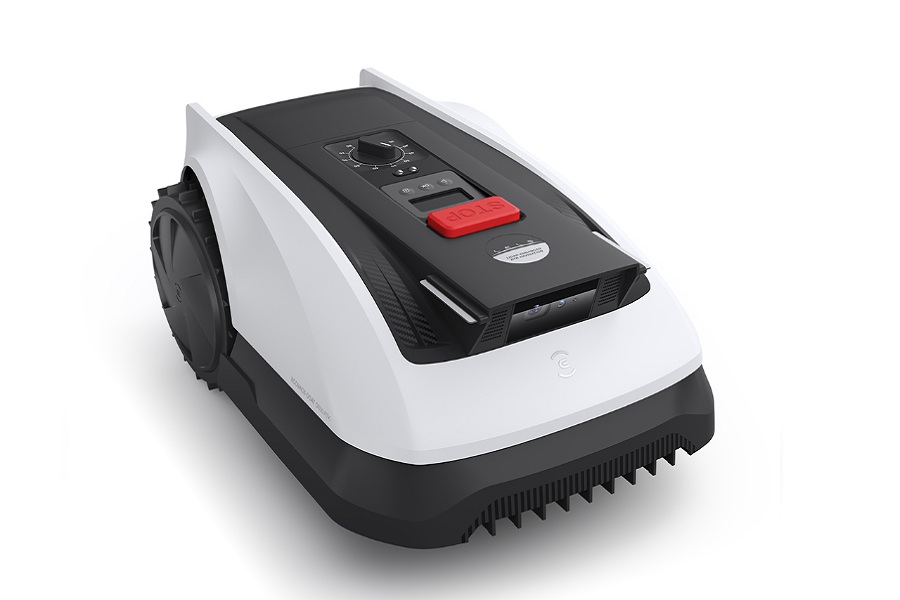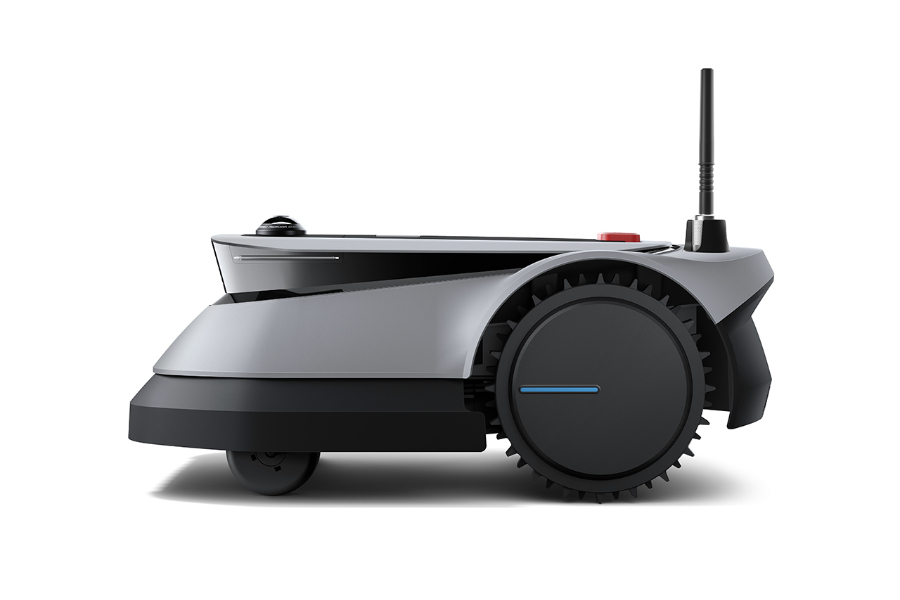Can Robot Lawn Mowers Handle Hills?
2025-06-16

When you picture a robot lawn mower, you probably imagine it gliding across a flat, green lawn in a sunny suburb, just like most ads show. But what if your home is built on a hill, like those in San Francisco or Oregon?
Not every robot mower can handle that kind of workout. For steep gradients and uneven terrain, you’ll need a model with smart navigation, solid traction, and a strong motor. Since many municipalities and local councils have lawn height regulations, thus, failing to mow properly not only makes your lawn look rough, but it can also lead to accidents, fines, or even lawsuits if local rules aren’t followed.
Can Robot Lawn Mowers Handle Hills?
Yes, robotic lawn mowers can handle hills, and their performance relies on the specific model and the steepness of the slope. While the design and weight distribution of traditional mowers may struggle on inclines and tip over, robotic lawn mowers designed for hills offer an automated and safe solution for navigating and mowing challenging terrain.

Robot lawn mowers are well-equipped for addressing these common challenges of mowing hills:
● Rollover Risk: Steeper slopes increase the chance of a robot mower tipping over. The angle of the incline can shift a mower’s centre of gravity. If the angle exceeds what the mower is built to handle, it can tip over quickly and damage the device.
● Unstable Ground: Hilly gardens aren’t always packed firm. Loose soil, muddy patches, or unexpected dips can throw the mower off balance, causing it to slip, stall, or get stuck unintentionally.
● Uneven Cutting: On a slope, it is harder for the mower to maintain a consistent blade height. As a result, some areas end up over-trimmed, while others get missed entirely. A proper cut on hilly lawns requires advanced sensors and blade control.
● Obstacles: Rocks, exposed tree roots, or sudden drops become more dangerous on a slope. A smart robot mower must have real-time obstacle detection, intelligent mapping and the ability to maneuver without getting stuck or veering off track to avoid them.
● Tyre Damage: Going uphill over and over causes more friction and strain on tires; If the mower’s wheels aren’t built for tough terrain, they can eventually wear out the drive system. Quality tires with deep grooves and strong grip help maintain traction across sloped areas.
Why Do You Need Robot Mowers for Hills?
You need a robotic mower to take care of your hilly lawn because traditional mowers can struggle on inclines. Pushing one uphill is exhausting, and riding one can be risky on steep or slippery terrain. In comparison, a robot mower is worth it as it handles the slopes for you with smart sensors, strong grip control, and safe, automated movement.
These devices bring more than convenience; they run quietly, produce zero emissions, and let you start mowing, set no-go zones, adjust cutting height, and control speed, all remotely from your phone.
3 Best GOAT Robot Lawn Mowers for Hills
GOAT O800 RTK

If your lawn has a complex layout and challenges like uneven terrain, the GOAT O800 RTK uses AIVI 3D-ToF and AI camera technology, even in shady spots or under trees, helping it glide through hills day or night. This model easily climbs 24° steep slopes and crosses 1.18-inch barriers. To avoid pets and toys on the ground, the AIVI 3D system is trained to spot over 200 types of obstacles, and adjusts accordingly for safety.
Shop GOAT O800 RTK NowGOAT O500 Panorama

As a robot lawn mower for hills, the GOAT O500 Panorama is built with the revolutionary InstantGo empowered by LELS™ Panorama. The 18V energy platform also gives it excellent grip on gradients up to 24°1, 1.18-inch barrier-crossing and fits tight paths as narrow as 2.3 feet2. Once you set it up, you can start customizing through the user-friendly map editor on the app: you can adjust speed, mowing direction, obstacle handling, and schedule multiple mowing zones.
Shop GOAT O500 Panorama NowGOAT G1-800

The ECOVACS GOAT G1-800 supports up to 16 customizable mowing zones, automatically returns to its charging station, and offers 24/7 garden surveillance with up to 10 monitoring points via the app, all backed by TÜV Rheinland data protection certification.
How To Choose The Right Robot Mower for Hills?
To choose the right robot mower for hills, you need to look further than just power and check its ability to provide full lawn coverage, safe performance, and most importantly, saving your time and effort.
Slope Climbing Ability
If your lawn has elevated ground or a slope, it’s best to measure the angle between the incline and a horizontal plane first, using a slope meter, a dedicated smartphone app, a compass with a clinometer, or even a simple pole and basic trigonometry. Generally, a 27° incline is considered steep, and make sure your mower can handle the terrain.
Smart Navigation and Obstacle Avoidance
When navigating uneven ground, particularly where there are tree roots, rock patches, or narrow passageways, you’ll need a mower with sophisticated navigation features like LiDAR, AI cameras, RTK navigation and smart obstacle detection. If your pets or toddlers like to play outside, GOAT’s AIVI 3D system can identify and dodge moving objects in real time.
Traction
Good traction stops the mower from sliding or spinning out on slopes. If the incline is steep, look for deep-grooved tires and a strong drive system, such as the O800 RTK’s 18V platform with traction control, which allows it to grip and climb even on damp or uneven surfaces.
Battery Life
A bigger lawn or steeper slope demands more energy per cycle. To minimize interruptions, pick models with fast-charging or continuous mowing function.
Safety Measures
Slopes increase the risk of rollovers and blade accidents. In order to reduce injury or damage, check if the mowers come with built-in safety sensors. Take the GOAT O800 RTK as an example; it is powered by the Horizon X5 chipset with an 8-core CPU and 10 TOPS BPU, which shuts down the blades near obstacles and stops movement if lifted or tilted. For an added layer of security, you can also set no-go zones around pools or gardens to block access.
Weather Resistance
Slopes get slippery after rain or morning dew. Mowers with water-resistant housings, like the GOAT G1-800 with IPX6 waterproofing and rain sensors, can detect rain and return to the charging station automatically. This model is built to withstand various weather conditions and resume mowing about three hours after the rain stops.
Quiet Operation
When comparing petrol-powered traditional models like ride-on mowers with robot mowers, the latter run quietly thanks to battery power. Still, it’s a good idea to check the decibel rating if you live close to your neighbors or have children at home. For example, the GOAT G1-800 runs at ≤59 dB 3, which is quieter than a normal conversation, so it won’t disturb the peaceful living environment.
Disclaimer(s):
- Slope climbing up to 24°: This refers to the experimental result operated by ECOVACS Laboratory, the maximum slope of the GOAT O500 Panorama working area is 45%, which corresponds to approximately 24°.
- 2.3 feet: This refers to the experimental result operated by ECOVACS Laboratory, that ECOVACS GOAT O Family is able to go through the path as narrow as 2.3 feet. Actual result may vary depending on factors such as grass type, lawn size, terrain, and other environmental conditions.
- ≤59 dB: It has been certified by the ECOVACS laboratory that the noise of the GOAT G1-800 during operation is<59 dB.





